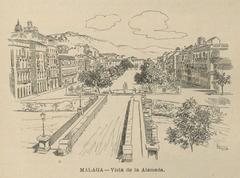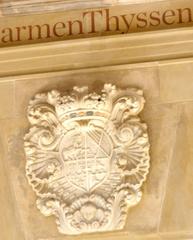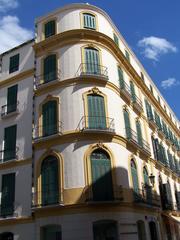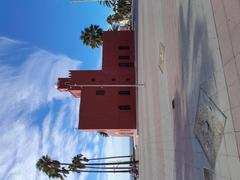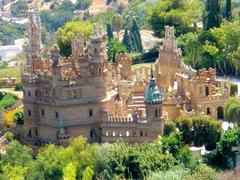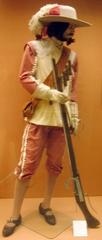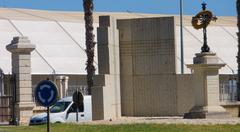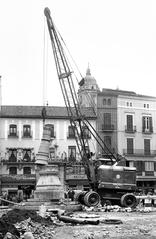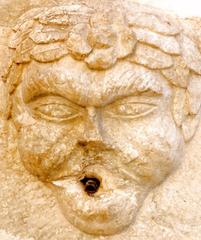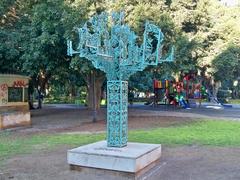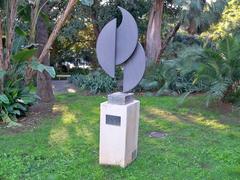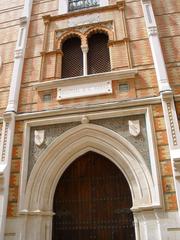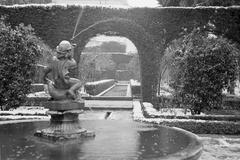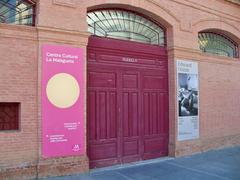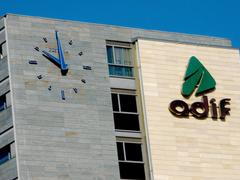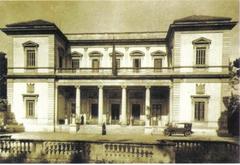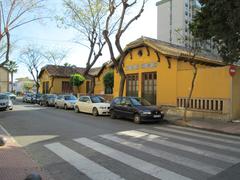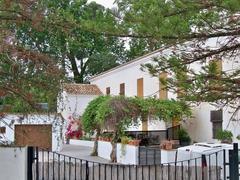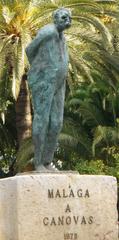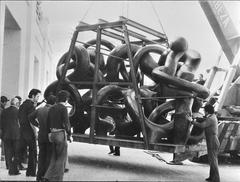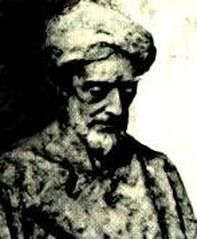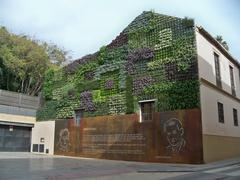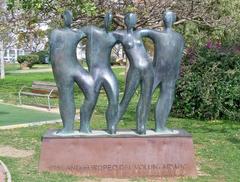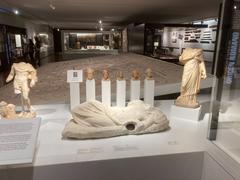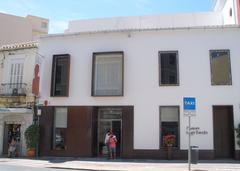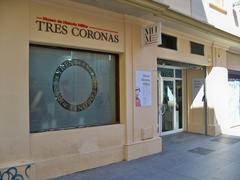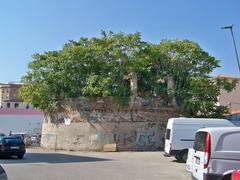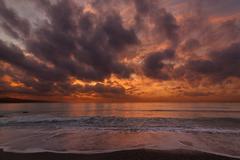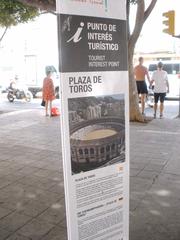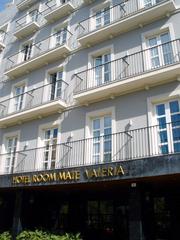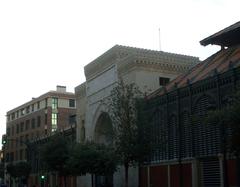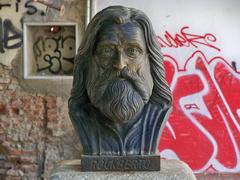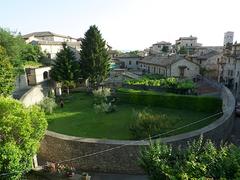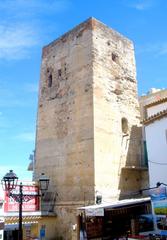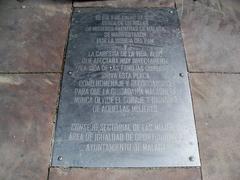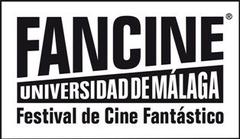Triumph of the Immaculate Conception Málaga: Visiting Hours, Tickets, and Travel Guide
Date: 14/06/2025
Introduction
The Triumph of the Immaculate Conception in Málaga, Spain, stands as a profound testament to the city’s religious heritage and artistic tradition. Deeply rooted in Catholic doctrine, the Immaculate Conception refers to the belief that the Virgin Mary was conceived free from original sin—a dogma that was officially defined by Pope Pius IX in 1854. For centuries, this doctrine has been a cornerstone of Spanish spirituality, with Málaga playing a pivotal role in its veneration through art, processions, and monuments (EWTN; Omnes Magazine).
Key sites, such as the outdoor monument in Plaza del Obispo beside Málaga Cathedral and the Cathedral’s Chapel of the Immaculate Conception, offer visitors a blend of historical insight, architectural grandeur, and spiritual significance. This comprehensive guide details everything you need to know about visiting hours, tickets, accessibility, and nearby attractions. It also explores the cultural festivities of the Feast of the Immaculate Conception on December 8th, when Málaga’s streets come alive with vibrant processions and community celebrations (Sur in English).
Table of Contents
- Introduction
- Historical Background of the Immaculate Conception
- Artistic and Cultural Manifestations in Spain
- The Triumph of the Immaculate Conception in Málaga
- Visiting the Immaculate Conception Monument in Málaga
- Chapel of the Immaculate Conception in Málaga Cathedral
- Experiencing the Feast of the Immaculate Conception in Málaga
- Practical Information for Tourists
- Triumph of the Immaculate Conception Málaga: Visiting Hours, Tickets & Cultural Guide
- Frequently Asked Questions (FAQ)
- Visual Media
- Summary and Final Tips
- Emergency Contacts
- References
Historical Background of the Immaculate Conception
Early Origins and Theological Development
The doctrine of the Immaculate Conception has origins traceable to both Eastern and Western Christian traditions. By the seventh century, its feast was celebrated in Spain. The doctrine’s popularity grew significantly in the Middle Ages, especially following the Christian reconquest of southern Spain. Brotherhoods and confraternities dedicated to Mary’s “Pure and Clean Conception” flourished, deepening local devotion (The National Shrine of Mary, Mother of the Church; Omnes Magazine).
Spanish Devotion and National Significance
Spain’s devotion to the Immaculate Conception is unique in its intensity. By the seventeenth century, “immaculist” fervor peaked, with cities like Seville and Valladolid leading in religious celebrations and artistic commissions. In 1760, Pope Clement XIII, at Spain’s request, named the Immaculate Conception as the patroness of Spain, cementing the doctrine’s national significance (Omnes Magazine).
Path to Dogma: Papal Declarations
Despite early and widespread devotion, the Immaculate Conception was not defined as dogma until 1854, when Pope Pius IX issued the encyclical “Ineffabilis Deus”. This declaration formalized centuries of Spanish advocacy for the doctrine (Museo Carmen Thyssen Málaga).
Artistic and Cultural Manifestations in Spain
Baroque Spain became renowned for its artistic devotion to the Immaculate Conception. Painters such as Murillo and Zurbarán depicted Mary as a radiant figure, surrounded by symbols of purity like lilies and crescent moons. Churches, altars, and public monuments across Andalusia—including Málaga—were dedicated to Mary, especially after the Reconquista (Google Arts & Culture; Omnes Magazine).
The Triumph of the Immaculate Conception in Málaga
Following Málaga’s conquest in 1487, the city was integrated into the Catholic world, with Marian feasts and processions established as key elements of local identity. Although Málaga’s Christian architecture is less grand than some neighboring cities, its devotion to the Immaculate Conception remains central, particularly during annual celebrations on December 8th (Andalucia.com; Omnes Magazine).
Visiting the Immaculate Conception Monument in Málaga
Location and Overview
Situated in Plaza del Obispo, the Immaculate Conception monument is a focal point in Málaga’s historic center. Its proximity to Málaga Cathedral, cafés, and other landmarks makes it an essential stop for cultural and spiritual exploration (Voyage Tips).
Visiting Hours and Tickets
- Monument: Open 24/7; no ticket required.
- Cathedral: Tickets are required for entry and bell tower climbs (Anywhere We Roam).
Guided Tours and Accessibility
Guided tours can be arranged through local operators or the Málaga tourism office. The plaza is flat and wheelchair accessible, with ramps and benches.
Nearby Attractions
Explore the Alcazaba fortress, Roman Theatre, and Picasso Museum, all within easy walking distance (Spain.info).
Chapel of the Immaculate Conception in Málaga Cathedral
Location and Access
The Chapel is housed within Málaga Cathedral (“La Manquita”), at Calle Molina Lario, 9, 29015 Málaga (malagacatedral.com).
Cathedral Visiting Hours
- Monday–Friday: 10:00–20:00
- Saturday: 10:00–18:00
- Sunday: 14:00–18:00
- Free Access: Limited early morning hours; check official site for details.
Ticket Information
- General Admission: Includes a multilingual audio guide.
- Discounts: For seniors, students, groups, and Málaga residents.
- Children under 13 and people with disabilities: Free entry (malagacatedral.com).
Visitor Tips
- Audio Guides: Highly recommended.
- Dress Code: Modest attire required.
- Photography: Allowed without flash; restrictions may apply during services.
- Accessibility: Contact the cathedral in advance for specific needs.
Experiencing the Feast of the Immaculate Conception in Málaga
December 8th Celebrations
The Feast of the Immaculate Conception is one of Málaga’s most significant religious events. Key highlights include:
- Special Masses: Featuring choral music and priests in blue vestments—a unique Spanish tradition (Sur in English).
- Processions: Statues of the Virgin are paraded through the streets, accompanied by bands and incense.
- Community Celebrations: Towns like Guaro and Arroyo de la Miel host their own festivities.
Practical Information for Tourists
- Getting There: Málaga is accessible via international airport and high-speed trains. The cathedral and monument are centrally located.
- Nearby Amenities: Cafés, restaurants, and souvenir shops abound in the historic center (Spain.info).
- Safety: The area is safe, but standard precautions are advised.
- Language: Spanish is primary; English is widely spoken in tourist areas.
Triumph of the Immaculate Conception Málaga: Visiting Hours, Tickets & Cultural Guide
Theological and Historical Significance
The Immaculate Conception is not only a religious doctrine but also a symbol of Spanish national identity. Its artistic representations—especially by Murillo—have shaped both local and national culture (Google Arts & Culture).
Visiting Hours & Tickets
- Public processions: Free, usually in the late afternoon/evening around December 8th.
- Museums and churches: Generally open 10:00–18:00. Check ahead during holidays.
Accessibility
Most procession routes and major museums are accessible, but some historic churches may have limited facilities.
Best Time to Visit
Early December, especially around the Feast day, is ideal for experiencing the celebrations. Spring and fall offer pleasant weather and fewer crowds.
Guided Tours and Photography Tips
Guided walking tours are available and recommended for deeper understanding. The best photography spots are around the Cathedral plaza and at golden hour.
Nearby Attractions in Málaga
- Málaga Cathedral (“La Manquita”)
- Alcazaba Fortress
- Museo Picasso Málaga
- Plaza de la Constitución
Find more details at the Málaga Tourism Office.
Symbolism and Iconography
The monument and related artworks feature Mary on a crescent moon, clothed in white and blue, surrounded by angels and symbols like lilies and mirrors—all referencing purity and biblical prophecy (Google Arts & Culture).
Frequently Asked Questions (FAQ)
Q: Is there an entrance fee for the monument?
A: No, it is free and always accessible.
Q: What are the cathedral’s visiting hours?
A: Monday–Friday 10:00–20:00, Saturday 10:00–18:00, Sunday 14:00–18:00.
Q: Are the celebrations accessible for those with mobility challenges?
A: Most procession routes and the plaza are accessible; check ahead for church access.
Q: When is the best time to visit?
A: December 8th for the Feast, or spring/fall for fewer crowds.
Q: Are guided tours available?
A: Yes, through local operators and the Málaga tourism office.
Visual Media
Explore multimedia galleries and virtual tours on official tourism websites for an enhanced experience.
Summary and Final Tips
The Triumph of the Immaculate Conception in Málaga encapsulates a unique fusion of faith, art, and local tradition. From the evocative monument in Plaza del Obispo to the richly adorned Chapel within Málaga Cathedral, these sites offer profound insights into the theological significance and historical evolution of Catholic devotion. The annual Feast on December 8th provides a vibrant display of tradition and community pride (Omnes Magazine; malagacatedral.com).
Plan your visit around festivals or during quieter months for a tailored experience. Utilize official tourism resources and the Audiala app for up-to-date information and immersive guides.
Emergency Contacts
- Police: Dial 112
- Tourist Assistance: Málaga Tourist Office at Plaza de la Marina
References and Further Reading
- The National Shrine of Mary, Mother of the Church
- Omnes Magazine
- Museo Carmen Thyssen Málaga
- Andalucia.com
- malagacatedral.com
- Sur in English
- EWTN
- Voyage Tips
- Spain.info
- Google Arts & Culture
- Hola Properties
- Malaga Sun Apartments
- Mother of All Peoples
For more travel guides and updates, download the Audiala app and follow us on social media. Share your experience with #Malaga and #ImmaculateConception.
